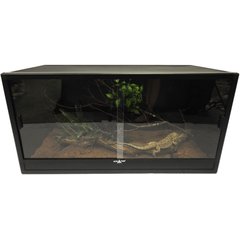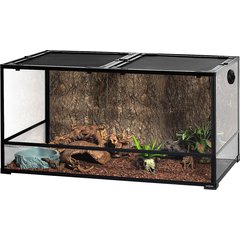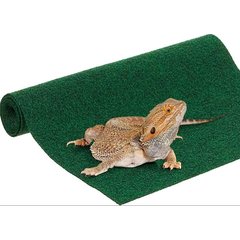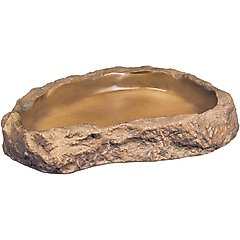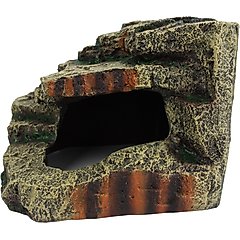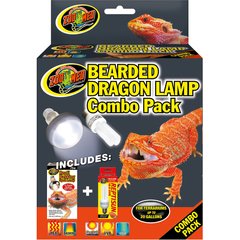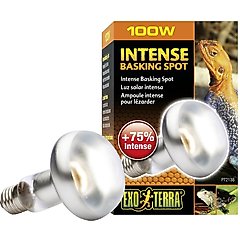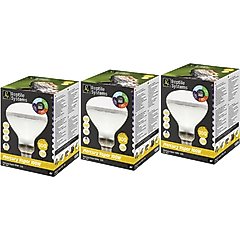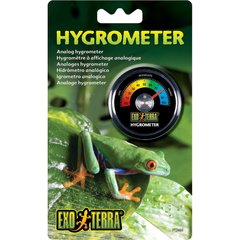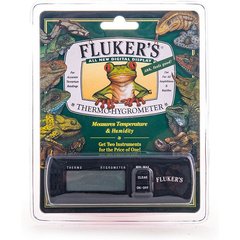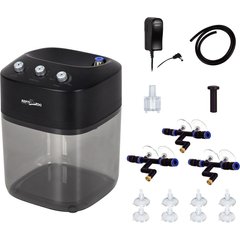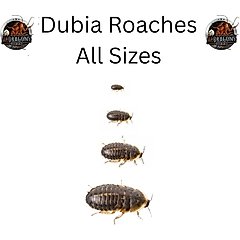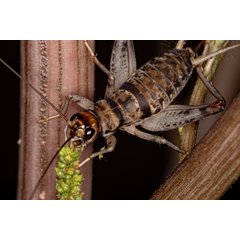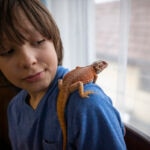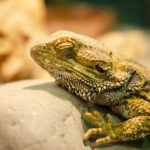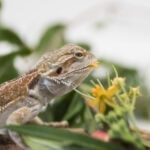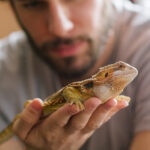How Long Do Bearded Dragons Live?
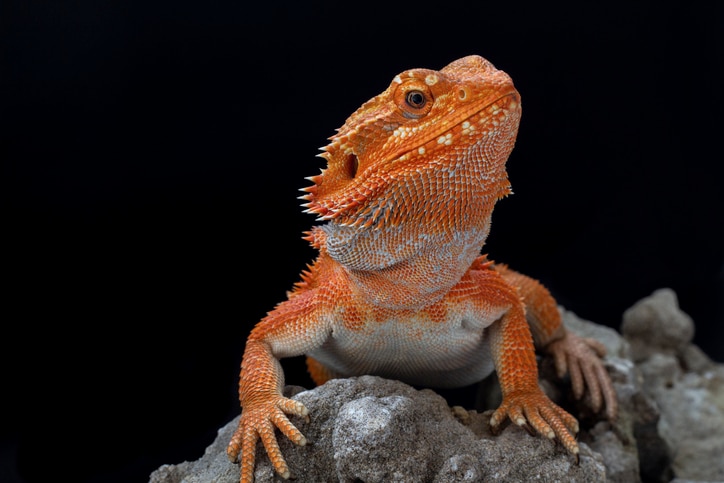
Photo by Dwiwanto Indrayu Bawono/iStock/Getty Images Plus
Thinking about welcoming a scaly friend into your family? Bearded dragons can be fantastic pets, but only if you’re able to give them the care they need.
So, how long can bearded dragons live, and what’s the secret to a long life? Here’s how to help your bearded bestie thrive.
Key Takeaways
- Pet bearded dragons typically live 8 to 11 years.
- Captive beardies generally live longer than those in the wild since they have easier access to food, safe housing, and vet care.
- Bearded dragons need tailored housing—including an extra-large tank, proper lighting and temperatures, and basking and hiding spots—to thrive.
How Long Do Bearded Dragons Live?
Bearded dragon life expectancy depends on whether they live in the wild or as a pet.
The average lifespan of pet bearded dragons is 8 to 11 years but is generally shorter in the wild, according to Anthony Pilny, DVM, DABVP, medical director and hospital co-owner at Arizona Exotic Animal Hospital.
This is likely due to the harsh environment of Central Australia, their native wild habitat. Dr. Pilny says wild bearded dragons face predators, food scarcity, extreme weather, and competition for resources.
Your pet beardie, on the other hand, will enjoy regular meals, climate-controlled living, and medical care when they need it.
How To Give Your Bearded Dragon a Long Life
Want to help your beardie grow old gracefully? It’s all about providing specialized care.
Create the Perfect Habitat
Bearded dragons need lots of space, especially as they grow, so that they’re able to explore and avoid stress and boredom—all keys to a longer life. A too-small cage can also contribute to infections and allow parasites to spread more quickly.
When in doubt, Dr. Pilny advises going with the “largest tank you can afford, have room for, and can keep sanitary.” A 75-gallon tank is ideal, he says, but a tank should never be fewer than 40 gallons.
Recommended Products
Once the tank is squared away, you’ll need some essentials:
- Substrate (flooring material): Choose something safe and easy to clean. Dr. Pilny recommends reptile carpet or artificial turf and suggests avoiding sand, since it’s dangerous if ingested. Gravel, wood chips, and walnut shells are also off-limits, as they can lead to serious digestive problems.
- Food dishes: Use shallow dishes, and avoid placing food on the tank floor to prevent accidental substrate ingestion during mealtime.
- Multiple hiding spots: Caves, rocks, and non–toxic plants allow your beardie to escape the heat or cool down as needed. They also provide a sense of safety.
- Basking areas: Add sturdy branches or rocks for climbing and basking.
Recommended Products
Maintain the Right Temperatures
Bearded dragons are cold-blooded, which means they can’t regulate their own body temperature like humans do. That’s why your beardie’s tank needs to have a thermal gradient, or a warm and cool side.
Create this gradient by placing heat sources, like basking bulbs, on one end of the tank only. This heats up that area while leaving the opposite end cooler.
Without this temperature control, bearded dragons are unable to properly digest their food and will become seriously ill.
Todd Driggers, DVM, DACEPM, a veterinarian at Avian & Exotic Animal Clinic in Mesa, Arizona, recommends keeping the warm zone at 100 F. The cooler end should be kept around 75 F.
Recommended Products
Provide Proper Lighting
Your beardie needs about 10 to 12 hours of light daily, whether that’s sunlight, UV bulbs, or a combo of both. Natural sunlight is ideal, says Dr. Pliny, but you can use UV lighting to help meet your beardie’s daily needs.
Mercury vapor reptile lights are Dr. Pilny’s go-to recommendation, as many provide both heat and UV with a single bulb. But getting the balance wrong can cause issues.
“Excessive UV without the heat” is a bad idea, says Dr. Driggers. The heat acts as a “warning system” to let your lizard know they shouldn’t bask too long under the lights, which would put them at risk for skin cancer and shorten their lifespan. On the other hand, heat without UV exposure can lead to chronic dehydration.
Sound complex? Dr. Driggers has a simple solution: Snap a picture of your habitat setup and show it to your vet for personalized advice.
Recommended Product
Create a Humid Environment
A happy beardie is a humid beardie. Aim for 30% to 50% humidity and use a hygrometer to check the levels daily.
Humidity is essential for keeping your beardie hydrated and helping them properly shed their skin. Dehydration can significantly shorten lifespan.
Recommended Products
“In the wild, bearded dragons stay in humid burrows or around moist sand for much of the day,” Dr. Pilny says.
To replicate this in captivity, he recommends these methods to boost humidity:
- Light misting of the habitat
- Using a humidifier
- Placing a water bowl near the heat lamp
Recommended Products
Feed a Balanced Diet
What’s on your beardie’s menu? Bugs, bugs, and more bugs. But like humans, they also need leafy greens. Dr. Driggers recommends focusing on variety, including bugs like dubia roaches and crickets, along with spring mix and romaine lettuce.
Recommended Products
Dr. Driggers suggests feeding bugs outside of the tank to ensure your beardie catches and eats them while they’re at peak nutrition. This also prevents the bugs from eating waste in the enclosure, which can lead to parasite issues.
While it’s tempting to show love through extra treats, Dr. Driggers warns this can lead to obesity and health issues like fatty liver and heart disease. He suggests offering about “two to three times the volume of their mouth’s interior,” which is roughly what a beardie’s stomach can handle.
Recommended Products
Schedule Regular Vet Visits
With preventive care, you can increase your beardie’s lifespan, says Dr. Pilny, but you’ll need to find an exotic vet with experience treating bearded dragons.
Dr. Driggers recommends a member of the Association of Reptile and Amphibian Veterinarians or someone who is board-certified in exotics, with experience in reptiles.
When To Visit
Dr. Driggers suggests scheduling a vet visit before bringing your beardie home to ensure you understand their care and habitat requirements. Then, bring your beardie in for routine physical exams. When they’re feeling unwell, fecal and adenoviral testing can rule out a serious infection.
Warning Signs To Watch For
Between vet visits, look for changes in your bearded dragon’s routine. Dr. Pilny says signs of illness include:
- Loss of appetite
- Lethargy
- Increased hiding
- Vomiting
- Limping
Schedule a vet visit immediately if you see these symptoms.
Common Preventable Issues
The good news? Many beardie health issues are preventable with proper care, says Dr. Pilny.
Metabolic bone disease, for instance, is the result of a poor diet, while kidney problems may come from chronic dehydration due to a poor habitat setup.
Dr. Driggers sees several common conditions that are manageable with early detection, including:
- Parasites like coccidiosis and pinworms
- Yellow fungus disease
- Bite wounds from communal housing
- Shedding issues from improper temperatures
FAQs About Bearded Dragon Lifespan
How long do lizards live?
Lizard life expectancy varies by species. A typical pet bearded dragon lifespan is 8 to 11 years, while some smaller lizards may only live 2 to 3 years. Larger reptile species, like iguanas, can live 15 to 20 years or more.
Do bearded dragons need shots?
Unlike dogs and cats, bearded dragons don’t need routine vaccinations. However, regular vet checkups and preventive care are a must.
How can I tell how old my bearded dragon is?
One way to determine your bearded dragon’s age is to measure them. If they’re less than 4 inches, they’re probably less than 1 month old. If they’re 20 inches or longer, they’re probably 8 months old or more. Your vet can help you tell for sure.
Can bearded dragons live 20 years?
While it’s a nice thought, it would be unusual for a bearded dragon to live to be 20 years old. Generally, their lifespan is 8 to 11 years.
How old is the oldest bearded dragon?
While some beardie owners online say their dragons have lived longer (anything’s possible), the oldest recorded bearded dragon was 18 years old.
